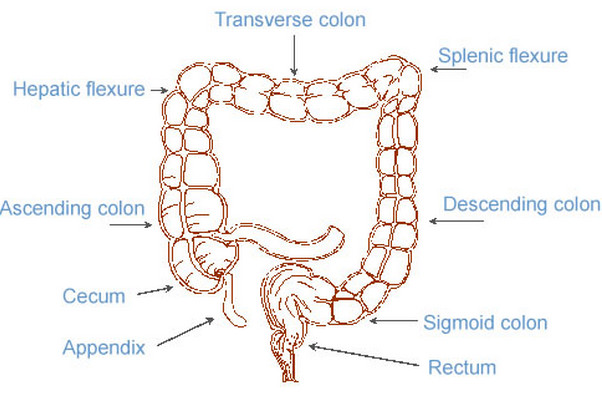
Electronic address: 2 Department of General Radiology, Provincial Specialist Hospital in Legnica, Iwaszkiewicza 5, 59-220 Legnica, Poland.
1 Department of Human Morphology and Embryology, Division of Anatomy, Wroclaw Medical University, Chalubinskiego 6a, 50-368 Wroclaw, Poland. Lymph from the penis and prepuce drains into the superficial inguinal lymph nodes. The glans penis and internal lamina of the prepuce are heavily infiltrated by sensory nerve endings responsible for stimulating ejaculation (link to ejaculation). Mostly parasympathetic from the paired pudendal nerves. The prepuce covering the flaccid penis is supplied by anastamosis between the external pudendal artery and the artery of the penis. Dorsal artery of the penis – supplies the glans penis. Deep artery of the penis – supplies the corpus cavernosum. Artery of the bulb – supplies the corpus spongiosus. The artery of the penis is a direct branch off the internal pudendal artery. When the muscles are relaxed the penis protrudes through the prepuce as the sigmoid flexure unbends. Maintains the sigmoid flexure of the fibroelastic penis when the muscles are contracted. Paired muscles originating on the caudal vertebrae and inserting on the ventrolateral surfaces of the penis. Connect the penis to the ischial arch of the pelvis. Paired muscles located at the root of the penis. The function of this muscle is to empty the extrapelvic urethra of sperm in a similar way to the urethralis muscle emptying the pelvic urethra. A single muscle that covers the root and ventral surface of the penis as well as the bulbourethral glands (link to glands page). Therefore, a relatively larger volume of blood is required to achieve erection. The cavernous tissue contains large blood spaces divided by thin septa.  This penis structure contains a lot of erectile tissue and little connective tissue so during erection there is both an increase in length and diameter of the penis. The cavernous tissue contains small blood spaces which means that only a small increase in blood to the penis is require to achieve erection. However, most of the increase in penile length is actually due to the straightening of the sigmoid flexure. Therefore, erection only results in increased length of penis and no increase in diameter of the penis. They are encased by a non-expandable connective tissue sheath called the tunica albuginea. Contain large amounts of connective tissue and elastic fibres but limited erectile tissue. Tom cat – cone shaped with Keratinised Papillae, directed caudally. Dog – substantial glans penis which is divided into the bulbus glandis found proximally and the pars longa glandis found distally. Stallion – Mushroom shaped with slight protrusion of the urethral process. Ram – large extension of the urethral process. Boar – corkscrew shaped with a left hand thread. Glans Penis Morphology - Copyright Amy Cartmel Within the prepuce are varying amounts of striated muscle fibres the cranial prepucial muscles responsible for retracting the prepuce and the caudal prepucial muscles responsible for protracting the prepuce.
This penis structure contains a lot of erectile tissue and little connective tissue so during erection there is both an increase in length and diameter of the penis. The cavernous tissue contains small blood spaces which means that only a small increase in blood to the penis is require to achieve erection. However, most of the increase in penile length is actually due to the straightening of the sigmoid flexure. Therefore, erection only results in increased length of penis and no increase in diameter of the penis. They are encased by a non-expandable connective tissue sheath called the tunica albuginea. Contain large amounts of connective tissue and elastic fibres but limited erectile tissue. Tom cat – cone shaped with Keratinised Papillae, directed caudally. Dog – substantial glans penis which is divided into the bulbus glandis found proximally and the pars longa glandis found distally. Stallion – Mushroom shaped with slight protrusion of the urethral process. Ram – large extension of the urethral process. Boar – corkscrew shaped with a left hand thread. Glans Penis Morphology - Copyright Amy Cartmel Within the prepuce are varying amounts of striated muscle fibres the cranial prepucial muscles responsible for retracting the prepuce and the caudal prepucial muscles responsible for protracting the prepuce. 
The prepuce is hairless and contains many smegma secreting glands important for lubrication between the shaft of the penis and the prepuce during copulation.
#Sigmoidal flexture skin
The prepuce is the skin sheath that conceals the penis when it is flaccid and is formed by an invagination of the abdominal skin. The glans penis is highly populated with sensory nerves. For example the boars “corkscrew” glans penis corresponds to the many interdigitating prominences of the sow’s cervix. There is a great variation in the morphology of the glans penis between species which often correspond to the female tract morphology. At the end of the penis the corpus spongiosum expands over the distal end of the corpus cavernosum to form the Glans penis, bringing the urethra to the extremity of the penis. It commences at the bulb of the penis as an enlargement of the spongy tissue of the pelvic urethra. The corpus spongiosum is a vascular tissue sleeve surrounding the urethra. In the dog the distal corpus cavernosum is transformed into bone to form the Os penis which plays an important part in the dog achieving intromission with the bitch during copulation.The corpus cavernosum is made up from the paired columns of cavernous tissue surrounded by connective tissue known as the crura of the penis or corpora cavernosa.

There are two types of penis: the musculovascular and fibroelastic penis. It is formed from three parts two Corpora cavernosa, comprising of cavernous tissue and a connective tissue sheath the tunica albuginea, and the single Corpus Spongiosum which contains the urethra encased in a vascular tissue sleeve.







 0 kommentar(er)
0 kommentar(er)
